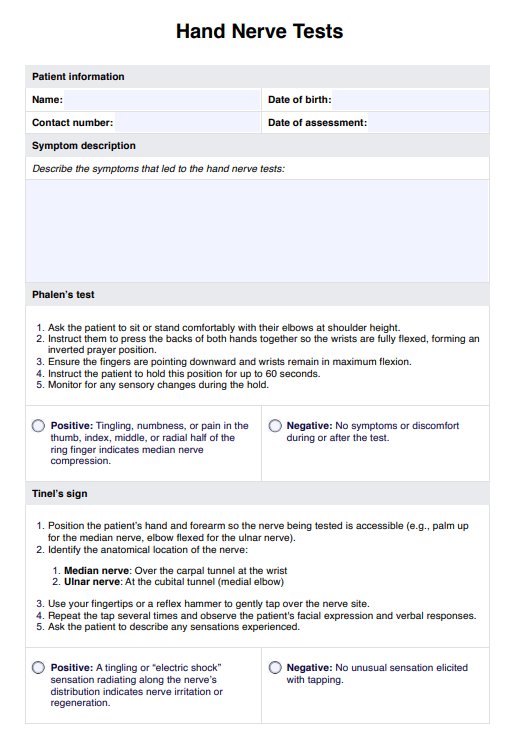It is performed to assess the function and integrity of nerves in the hand, helping diagnose conditions like carpal tunnel syndrome and guiding appropriate treatment.

Hand Nerve Tests
Discover the intricacies of hand nerve tests, including Tinel's and Phalen's. Learn the importance of hand examination in providing timely interventions.
Use Template
Hand Nerve Tests Template
Commonly asked questions
Generally, it involves minimal discomfort, almost a pain-free experience, such as mild tingling during certain maneuvers. It is a well-tolerated diagnostic procedure.
The clinical examination duration can vary, typically around 20 to 30 minutes. The test involves a series of maneuvers and assessments to thoroughly evaluate nerve function in the hand.
EHR and practice management software
Get started for free
*No credit card required
Free
$0/usd
Unlimited clients
Telehealth
1GB of storage
Client portal text
Automated billing and online payments











